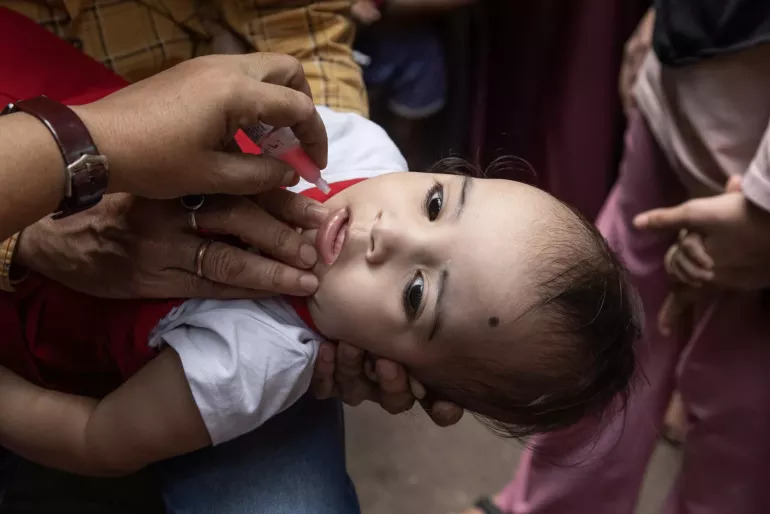South Asia reached its highest-ever immunisation coverage for children in 2024, marking a milestone in the region’s drive to protect every child from vaccine-preventable diseases.
The WHO and the UNICEF released new data in this regard on Tuesday.
“This is a proud moment for South Asia. More children are protected today than ever before, thanks to tireless frontline health workers, strong government leadership, donors’ and partners’ support and the unwavering trust of families,” said Sanjay Wijesekera, UNICEF regional director for South Asia.
“But we cannot forget the millions of children who are under vaccinated or unvaccinated. Now is the time to push further, especially into the most rural areas, to give every child his or her right to healthcare in the earliest years of life.”
In 2024, 92 per cent of the infants in the region received their third dose of the Diphtheria, Tetanus, and Pertussis (DTP) vaccine, a crucial global indicator of vaccination progress.
This marks a 2-percentage point increase since 2023. During the same period, the proportion of children receiving their first dose of DTP increased from 93 per cent to 95 per cent.
These figures show a strong bounce back, surpassing pre-COVID levels – reflecting the efforts of the South Asian governments to prioritise children’s health.
Additionally, there was a 27- percent reduction in the number of children who did not receive a single dose of the vaccine, also known as zero-dose children, decreasing from 2.5 million to 1.8 million in a year.
Progress has been notably strong in India and Nepal. India reduced its number of zero-dose children by 43 per cent, and Nepal achieved a 52-percent reduction.
Pakistan also achieved its highest-ever DTP3 coverage at 87 per cent. However, Afghanistan still faces challenges, having the lowest coverages in the region and saw a 1-percentage point drop in coverage over the past year.
South Asia achieved the strongest regional progress in eliminating measles. In 2024, 93 per cent of infants received the first dose and 88 per cent received the second dose, up from 90 and 87 per cent, respectively.
The number of measles cases dropped 39 per cent, from over 90,000 in 2023 to about 55,000 in 2024. However, vaccine coverage remains below the 95 per cent threshold required to prevent outbreaks.
“It is heartening to see WHO South-East Asia Region reach the highest ever immunisation rates, surpassing the pre-pandemic up-trend. We must build on this momentum and step up efforts to reach every child with these lifesaving vaccines. Together we can, and we must,” said Dr Thaksaphon Thamarangsi, Director Programme Management, WHO South-East Asia Region.
Vaccination coverage for adolescent girls in South Asia against human papillomavirus (HPV), a major cause of cervical cancer, increased from 2 per cent in 2023 to 9 per cent in 2024.
Bangladesh achieved notable progress, vaccinating over 7.1 million girls since starting its HPV programme in 2023. Similarly, Bhutan, the Maldives, and Sri Lanka increased their HPV vaccination rates by 3 percentage points (from 91 per cent to 94 per cent), 15 percentage points (from 60 per cent to 75 per cent), and 17 percentage points (from 31 per cent to 48 per cent) respectively in 2024.
Nepal launched its national HPV vaccination campaign in February 2025 and has vaccinated over 1.4 million girls so far. India and Pakistan are expected to launch their HPV vaccination programmes later this year.


